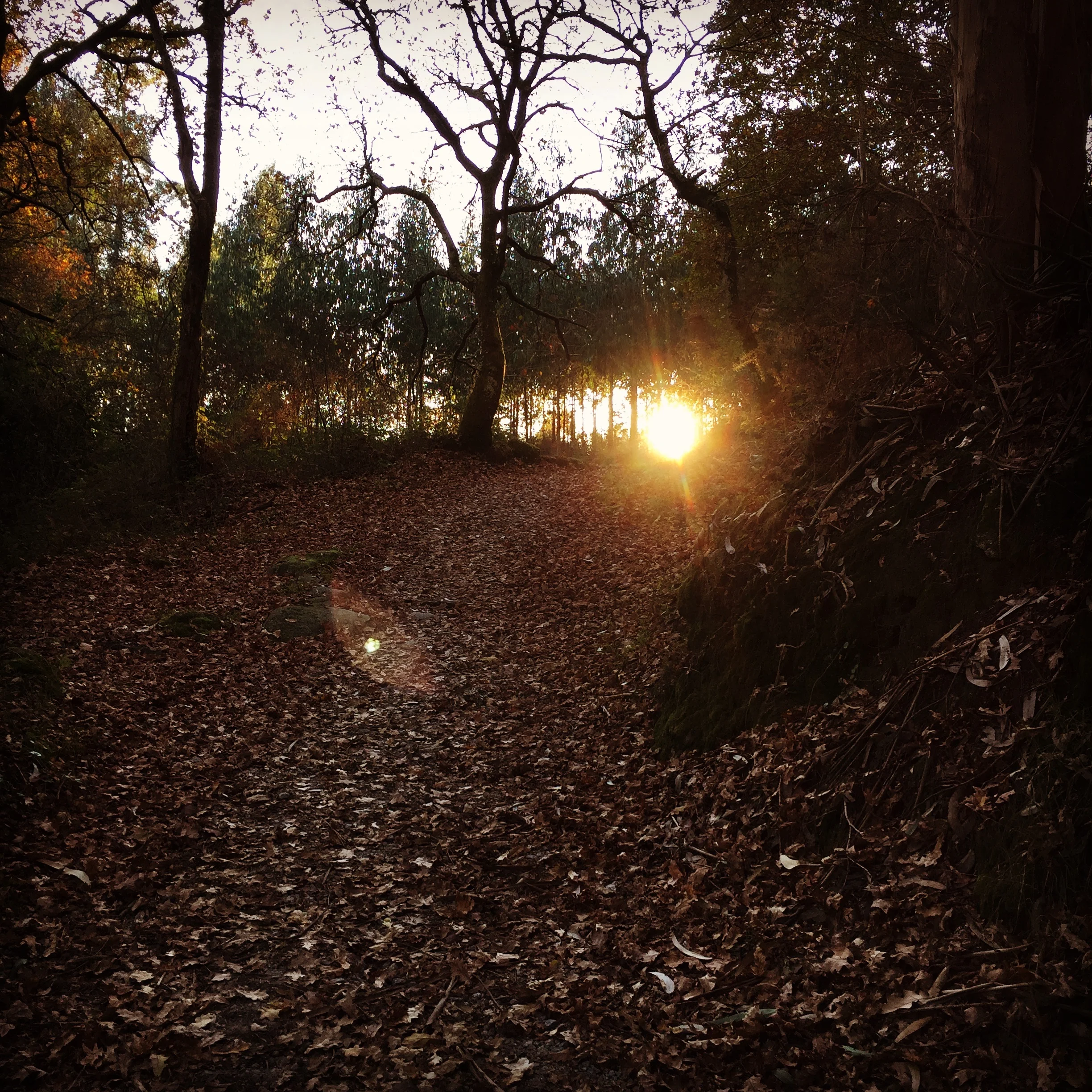Seekers have walked the ancient road to Santiago de Compostela for thousands of years, and all you have to do is be present and pay attention to feel the presence of hundreds of thousands of pilgrims who came before. The Camino is a liminal place, a place in between, not here nor there, now or then, but between them all, and as such it offers a thin veil between the ordinary world of our bodies and minds and the ineffable world of heart and soul. It is place where the hearts open to other people you meet along the way, other pilgrims, residents of the towns we walk through, as well as your own walking companions. Pilgrims and local people say over and over, “Buen Camino” (wishing a good “way”) in greeting and farewell, and nobody ever gets tired of it. Other words heard often are, “The Camino will provide.” Not to worry; everything you need will come to you. This speaks of the generosity of people along the way but also of the synchronicity that brings just the lessons we need to learn.
Here are a few things others have said about the Camino:
ANCIENT ROAD of the SOUL
from The spiritual traveler in spain
beebe bahram
“Some of the most intriguing stories (about the Camino de Santiago)—the ones that seem plausible given patterns in human history and geographical phenomenon—are of an ancient road, one that far predated the Christian one that was sacred and a path for spiritual initiates. Whether they were druids, priests, holy people, mystery school students, or all of the above, we cannot know. But that this road existed as a spiritual path, much like it became for early medieval Christians, is very likely.” (p 67)
SPIRIT OF PLACE
FROM THE SPIRITUAL TRAVELER IN SPAIN
BEEBE BAHRAM
“What all these (spiritual cultures walking the Camino over the centuries) hold in common with the current Christian Camino is a sense that the area transforms you, that it is neither pagan nor Christian, that no one can claim it with their dogma or ideology, but rather that it will write itself on the traveler and reveal mysteries of life, or challenges, to those who traverse it, each with his or her own issues and agendas.” (p. 69)
PILGRIMAGE
FROM THE ART OF PILGRIMAGE
PHIL COUSINEAU
“What legendary travelers have taught us since Pausanius and Marco Polo is that the art of travel is the art of seeing what is sacred. Pilgrimage is the kind of journeying that marks just this move from mindless to mindful, soulless to soulful travel. The difference may be subtle or dramatic; by definition it is life-changing. It means being alert to the times when all that’s needed is a trip to a remote place to simply lose yourself, and to the the times when what’s needed is a journey to a sacred place, in all its glorious and fearsome masks, to find yourself.” (p. xxiii - xxiv)
LONGING
FROM THE ART OF PILGRIMAGE
PHIL COUSINEAU
“We speak of God and geniuses and heroes and sacred sites, but these are only names for the ineffable mystery of the force behind something our souls long to be in touch with. No practical philosophy explains this urge. It is a force from the mysterious shadow world that may in turn long for us.” (p. 26)
THE NEED
FROM THE ART OF PILGRIMAGE
PHIL COUSINEAU
“There are many ways that individuals and cultures can, and do, lose their souls. To our peril, we forget that the gold is at hand; we forget that there is a hidden door, a sacred room in all our lives. The force behind the myths, fairytales, parables, and soulful travel stories reveals the myriad ways the sacred breaks through the resistance and shines forth into our world. Pilgrimage holds out the promise of personal contact with that sacred force. “ (P. 35)
BEING IN NATURE
FROM THE ART OF PILGRIMAGE
PHIL COUSINEAU
Joan Marler, dancer and mythologist, as quoted by Phil Cousineau: “For many women, going on a sacred journey means getting back in touch with what is sacred in the earth. That’s what I feel has come up in our time. First there is the personal restlessness, the feeling of being nowhere in the place they are now: then there is the need to feel something deeper than the surface glare of things, a longing to be somewhere else where that is possible.” (p. 51)
SEEING EACH OTHER WITH HEART AND KINDNESS
Phil Cousineau, writing about an experience of his own on pilgrimage says, “Something ancient and holy was unfolding all around me. It was what the wandering pilgrim-poet Basho called ‘a glimpse of the under-glimmer,’ an experience of the deeply real that lurks everywhere beneath centuries of stereotypes and false images that prevent us from truly seeing other people, other places, other times. An enormous gratitude welled up in me for the ritual kindness accorded the stranger, Me.” Heart connection and kindness are abundant on the Camino.

